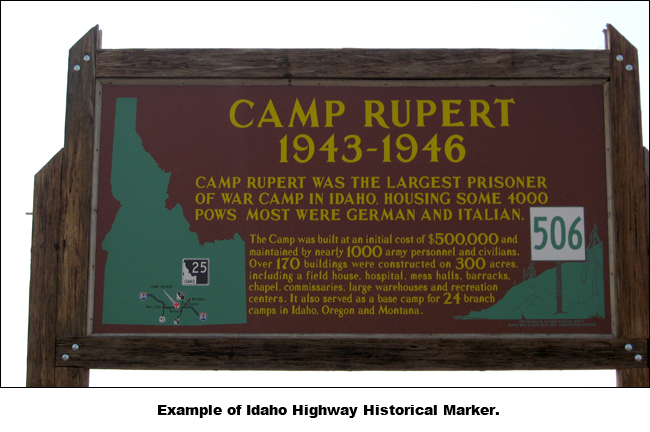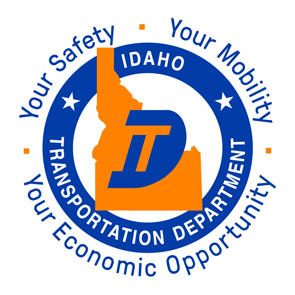

Board's November meeting features historical markers,
pavement research, and RRXing safety
![]()
Updates on the Highway Historical Marker Sign program, research projects for pavement and materials, railroad crossing safety initiatives, and off-road vehicle definitions and limitation were highlights of the Idaho Transportation Board’s November 14 meeting in Boise.
Historical Marker Signs
The Idaho State Historical Society started the Historical Marker Sign Program 62 years ago. MacArthur Eld, from Parma, recently traveled throughout the state to photograph and take inventory of the signs.
He established a four-point rating system for each sign. Of the 269 signs in the state, 37%, are in excellent condition, 38% are in good or fair condition, and 25% are in very poor condition and should be upgraded or replaced. Eld also provided the condition of the signs by district. District 6 had the most signs in excellent condition, 58%, followed by Districts 4 and 2 with 41% and 40%, respectively. District 2 has the most signs overall, with 60 (22%) followed by Districts 3 and 6 with 52 each or 19%.
Eld encouraged the Board to work with the state historical society to make this important program a higher priority. He was informed that staff is aware of the concerns with these signs and is developing a plan to address them.
Research Program
The annual report on the Research Program was presented. The budget for the FY19 Research Program is $3.37 million, with 8.4% from state sources. Federal statutes require 2% of federal funding for roads and bridges be used for planning and research.
Staff elaborated on several materials and pavement-related research projects. FY19 projects include a statewide landslide risk assessment for Idaho highways, development of a prediction model for pavement temperature for use in falling weight deflectometer testing, evaluation of a precast pier system for use in accelerated bridge construction, and development of highway safety messaging strategies for K-12 students.
Annual Report on Railway-Highway Crossing Program
ITD receives $250,000 annually for projects in the Rail-Highway Crossing Program, which aims to reduce the number and severity of vehicle-train collisions at public railroad-highway crossings. The Fund also provides $25,000 to support public education and safety programs that promote awareness of public safety at railroad grade crossings.
The Rail Operation and Safety Team prioritizes projects for funding. The team is comprised of the Railroad/Utility Manager, representatives from each district, the Design/Traffic Engineer, the Safety Manager, and a Federal Highway Administration and Idaho Operation Lifesaver representative. Recent projects included active grade crossing equipment installation or upgrades at Brownlee Road in Boise County, Holly Avenue in New Plymouth, Academy Road near Greenleaf — all on the local system— and on US-91 north of Shelley; and crossing approach improvements on Poleline Road near Filer and ID-33 in Sugar City
The five-year fatality rate at railway-highway crossings for 2013-2017 is 2.2. The serious injury rate is 2.4. The ultimate goal, of course, is zero.
Policy Updates
The board concurred with revisions to Administrative Policy 5070 All-Terrain Vehicles, Utility Type Vehicles, Specialty Off-Highway Vehicles, Motorbike and Snowmobile Travel and Crossing on State Highways. Recent revisions to Idaho Code allow the referenced vehicles to travel within cities and one mile beyond city limits on non-full access-controlled state highways where the speed limit is 45 mph or less. Revisions also allow these vehicles to cross non-full access-controlled highways at public road intersections regardless of the speed limit or municipal boundaries. The policy was updated to reflect these changes and conform to Idaho Code.
All policies can be found on SharePoint under Policy Finder: http://itdportal/sites/Admin/BSM3/PolicyFinder/default.aspx
Published 11-30-18